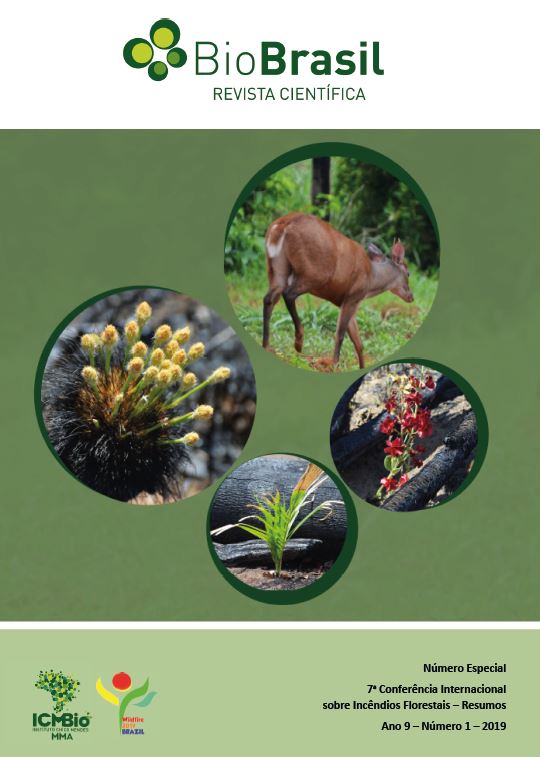Fuel Management and Wilfire Risk Reduction through Prescribed Fire in Wildland Urban Interface in South-Central Spain
DOI:
https://doi.org/10.37002/biodiversidadebrasileira.v9i1.1078Keywords:
Wildland-urban interface, prescribed fire, riskAbstract
Puertollano city (Spain) account a large number of fires, located at the wildlandurban interface and to the industrial area (petrol-chemistry), which makes this a high vulnerable zone. Since 2014 a 25 ha-area is being annually managed through prescribed fires over two separated plots: East and West. According to both wildland location and historical fire behavior analysis, East area has the largest potential fires at the study area. Fires between 2007 and 2018 were analyzed considering their temporal and spatial distribution, by data contrast (number of fires, burnt area and control time) before the prescribed fire program and after the start of the program by geo-statistical analysis. Fire spatial distribution was studied by using the Kernel Density methodology from ignition points location. Additionally, affected area was assessed by Empirical Bayesian Kriging methodology.Whereas number of fires do not significantly differ after prescribed fire program start, results show a decrease of the burnt area at locations surrounding the East area, where historically fires are largest. At the western area, research did not find reduction of size neither number of fires. Nevertheless, average time to control fires increased at West area less than at the study area (37,3 % compared with 99,5 % at study area) and specially at East area as well (reduction of 51,5 % compared with an increase of 59,5 % at study area). In addition, West plot protect Puertollano urban zone from wind-driven wildfires spreading from west to east, considering most probable and more hazard scenario for population. Summarizing, prescribed fire program reduced wildfire risk and prevent damage from wildfires to Puertollano urban and industrial as well.Â
Â
Downloads
Downloads
Published
Issue
Section
License
Copyright (c) 2019 Os autores mantêm os direitos autorais de seus artigos sem restrições, concedendo ao editor direitos de ção não exclusivos.

This work is licensed under a Creative Commons Attribution-NonCommercial-NoDerivatives 4.0 International License.
Os artigos estão licenciados sob uma licença Creative Commons Atribuição-NãoComercial-SemDerivações 4.0 Internacional (CC BY-NC-ND 4.0). O acesso é livre e gratuito para download e leitura, ou seja, é permitido copiar e redistribuir o material em qualquer mídia ou formato.











